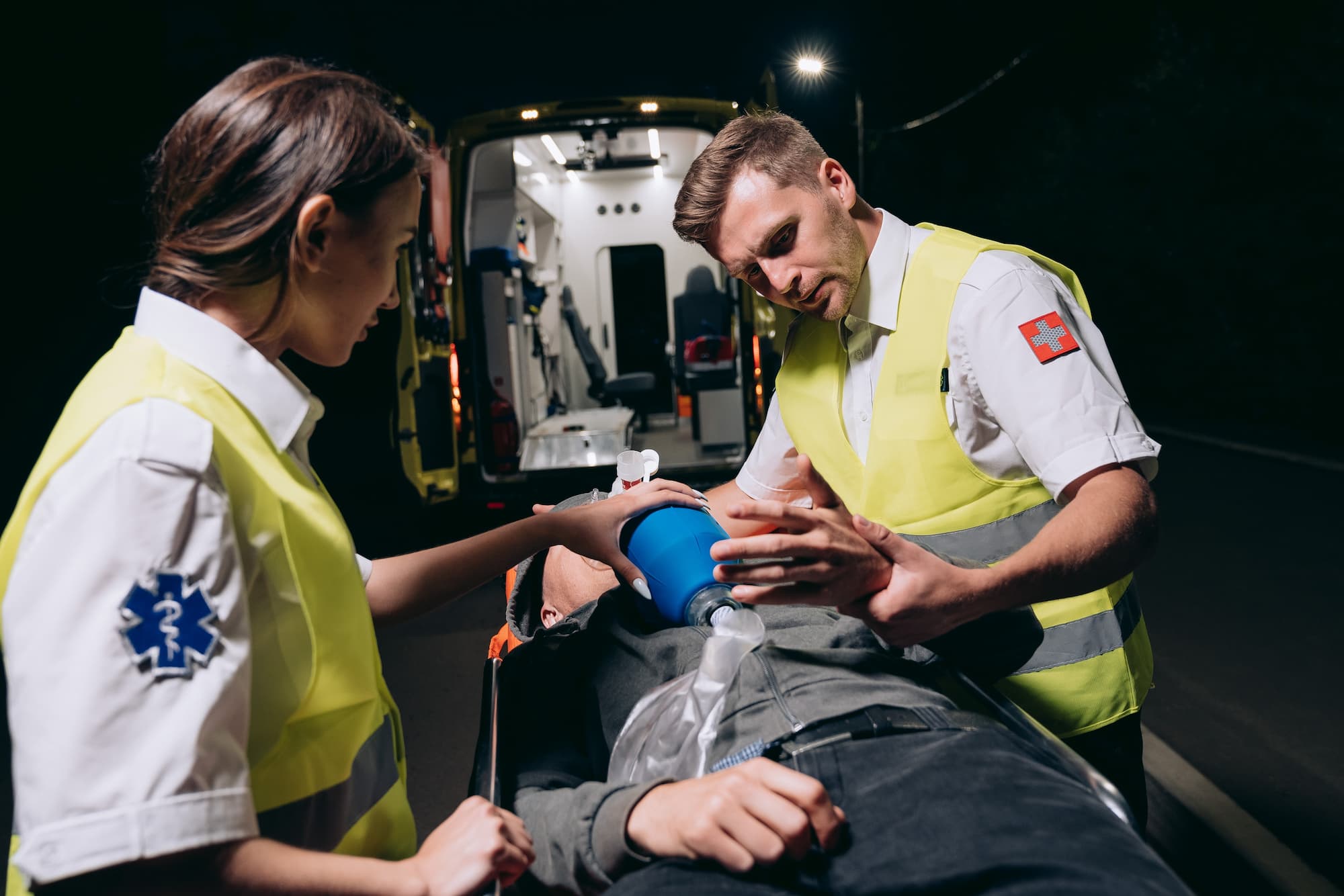Causes of myocardial infarction
A favorable prognosis for myocardial infarction depends on the actions taken by the patient and his family during the acute period of the disease. More than a third of all deaths from the consequences of myocardial infarction occur within 10-15 minutes after the first signs, symptoms of the disease. This high mortality rate is explained by the lack of basic resuscitation skills in many people and fear of the disease. Therefore, knowledge of the disease symptoms and ability to provide first aid will help you to save your life and health of yourself and those who will be near at the moment of heart attack.
According to statistics, heart attack in men is 5 times more common than in women, and doctors call coronary heart disease the main cause of this acute emergency condition. Heart attack in women is diagnosed 10-15 years later by age, and there is a connection with female sex hormones, which are good at protecting blood vessels from the development of atherosclerosis and deposition of cholesterol plaques.
Therefore, cardiologists now include male sex, old age, and heredity among the causes of heart attack. Usually the basis of the disease is a narrowing of the arteries that feed the heart because they are affected by atherosclerosis or because a blood clot clogs such a vessel. However, acute infarction may also be caused by trauma to an artery, radiation damage, vasospasm, or clotting disorders. People who have congenital anomalies of the coronary vessels that have not been corrected or corrected by surgery are at risk. As well as people who don’t follow a healthy lifestyle, don’t watch their diet, don’t exercise, and have a lot of stress in their lives. For example, a young man, after work, relaxing at a party with friends, after going to play casino, there spend a few more hours, and from the news that he won at roulette, the body gets such a load that it can occur and a heart attack.
First aid for myocardial infarction
Before proceeding to emergency care, it is important to learn how to accurately differentiate the symptoms of a heart attack from an angina attack.
The symptoms of these diseases are similar because they have the same causes: with angina, just like with heart attack, painful attacks appear due to insufficient blood supply (ischemia) to the heart muscle – the myocardium. The lack of blood supply to the myocardium is mainly due to atherosclerosis, a process of cholesterol deposition in the blood vessels. Over time, the lumen in the vessels becomes smaller, and one day a cholesterol plaque completely cuts off blood flow to the muscle.
The main difference between the symptoms of angina and heart attack is the inability to stop the painful symptoms with nitroglycerin. The thing is that without blood supply to a certain part of the myocardium, irreversible processes begin in it – necrosis (necrosis) of muscle tissue. Therefore, pills in this situation are ineffective. Also, painful sensations during a heart attack don’t disappear even after resting.

The main symptoms of a heart attack are:
- Sharp pain behind the sternum, in the left shoulder blade, left shoulder and arm. Sometimes the pain spreads to the neck, teeth, jaw, and even the stomach.
- Dizziness, chills, weakness, pallor due to lack of proper blood supply. The body is covered with cold sweat and the patient is short of breath.
- The blood pressure may rise or fall sharply, the pulse quickens, and the patient has panic and fear of death.
Nausea, coughing, and pain in atypical places such as fingers, teeth, or stomach are also part of the symptoms. Because of this, people sometimes confuse the first signs of a heart attack with symptoms of other diseases. Another fairly common and most dangerous symptom of a heart attack is complete cardiac arrest.
If you find yourself or your loved ones with the symptoms described above – call an ambulance immediately!
Actions of a patient with myocardial infarction
If you caught the disease when no one is around – do not panic! First aid for myocardial infarction can help yourself!
First, explain to the ambulance dispatcher in detail how to get to your apartment or house, as there will be no one to meet the paramedics. Leave your front door open.
- Open windows or turn on the air conditioner to get fresh air.
- Put a nitroglycerin tablet/capsule under your tongue. In this way, the drug will penetrate into the bloodstream more quickly and relieve some of the pain.
- Another drug that can help in the first minutes of a heart attack is aspirin. It will thin the blood and relieve symptoms. In order for the drug to work quickly, the tablet should be chewed. The approximate dose is 300 mg.
- Sit or lie down with a pillow under your back and head or any other suitable object that will keep the upper part of the body a little bit higher than the lower part. The legs should be bent at the knees. In this position of the body, it will be easier for the heart to pump blood. Next, you have to wait for the paramedics.
First aid for myocardial infarction
If someone nearby has a heart attack, you have 5-10 minutes to help the person through the most dangerous stage of the disease while the ambulance crew is on its way. If possible, send someone to meet the ambulance.
First aid for myocardial infarction symptoms begins with an attempt to calm the person, sit or lay him down. Hold the upper part of the patient’s torso slightly above the lower part and ask him to bend his knees.
Help the person undo his outer clothing, if you are indoors, make sure there is good ventilation. The pain in a heart attack, depending on the focus of the necrosis, can be so severe that it can cause death by pain shock. If it is not uncommon for a patient to have a heart attack, he is likely to have a nitroglycerin tablet with him. Put the tablet under his tongue, this will ease the course of the illness.
In some cases, the patient’s panic state during a heart attack threatens his health. In such a case, as part of the first emergency aid, it is recommended to give the person a sedative: Corvalol or Valokordin.
If the patient has lost consciousness, and there is no rhythmic breathing – as part of the first emergency aid urgently proceed to cardiopulmonary resuscitation. To save the person, you have 3-5 minutes. To do this, remember the algorithm of actions:
- To start the stopped heart from a height of 30-40 cm from the patient’s chest, apply a strong blow to the chest with the rib of the palm clenched in the fist (pre-cardiacal blow). Then feel for a pulse on the carotid artery. If there is no pulse, go to indirect heart massage and CPR;
- put a roll under the patient’s neck, constructed of improvised objects. Tilt the patient’s head back as much as possible;
- if necessary, clean the oral cavity with a tissue;
- give about 15 chest compressions alternating with two full exhalations into the mouth or nose. Periodically check the pulse on the carotid artery. If a heart attack occurs at the airport, train station – draw the attention of staff and ask for help. In places with mass gatherings of people there are sometimes automatic defibrillators.
Rescue efforts should continue until the patient regains consciousness, but no more than 5-7 minutes. If the heart cannot be restarted during this time, the person can no longer be helped.
How to take nitroglycerin correctly
The first tablet of nitroglycerin is discharged immediately after the appearance of pain symptoms. At intervals of 15-20 minutes, you can take two more tablets. Nitroglycerin is not recommended when myocardial infarction is accompanied by low blood pressure.
It is important to remember that nitroglycerin does not relieve pain in the same way as with angina pectoris. Therefore, if two or three pills did not help, you should stop taking them temporarily.
Remember, myocardial infarction is preventable! To avoid the development of the disease, it is necessary to undergo timely examination of the cardiovascular system and to be observed by a cardiologist.
